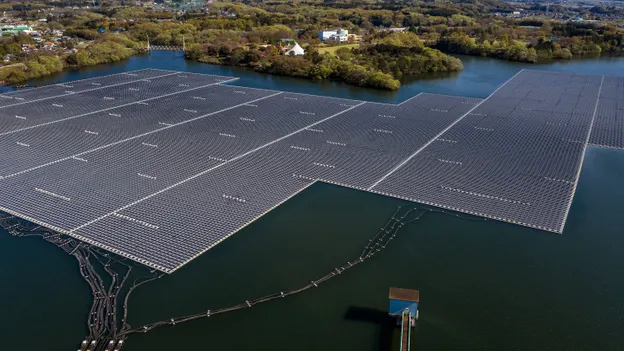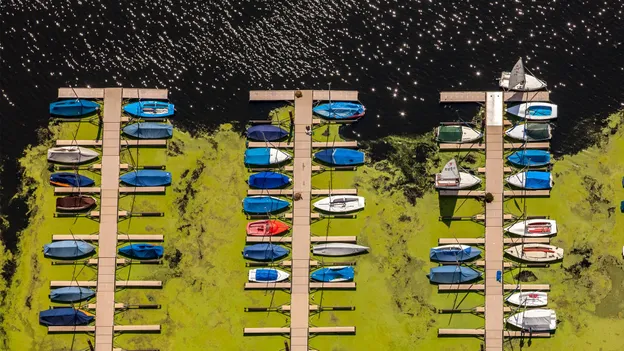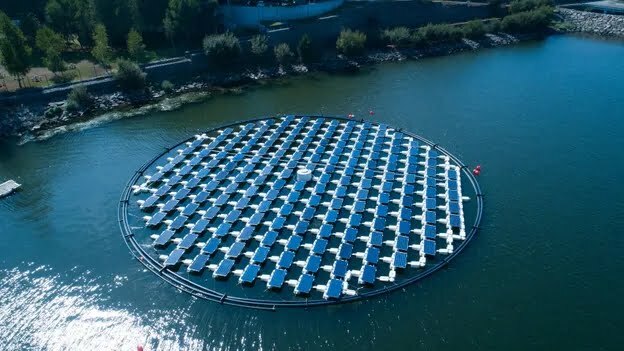Moving to a world of sustainable and clean energy is not a wish: it's a cure. The Earth is already shaken by the first abrupt climate changes, we need to reverse the trend of our greed because we no longer have much time to make amends.
Le renewable energy they are the first hope for mitigating the action of anthropocentric climate change. For this reason, thousands of companies around the world work to improve the efficiency of energy production technologies from clean sources. One of them has designed a network of floating solar plants that follow the Sun during the day.

Solar systems looking for light
SolarisFloat is a Portuguese company specializing in solar energy. He has developed Protevs, a prototype of a floating solar park whose panels move during the day to follow the Sun and make the most of its rays.
The bifacial panels rotate on two axes with mechanical sensors, allowing for greater absorption of sunlight and increasing efficiency.
The idea of building islands of floating solar plants on bodies of water was born from the need to avoid land consumption to obtain clean energy. Countries like Japan or Great Britain, islands that must intelligently manage their lands, could find this solution perfect which does not affect either agriculture or reforestation.
The latest installation, in the Oostvoornse Meer lake (in the Netherlands) is covered by 180 of these mobile solar panels, with a total installed capacity of 73 kilowatts of peak power (kWp). A small amount for a voracious world like ours, but it's a sign: these solar plants are establishing themselves, and we will see more and more of them.
The advantages of floating solar systems
First of all, the location. The panels of these solar systems can use the body of water on which they are placed as a natural refrigerant, avoiding overheating too much (which reduces their efficiency).
At the same time, the reduced water temperature under the solar park discourages the growth of toxic algae, promoting the conservation of aquatic ecosystems. Finally, it reduces the evaporation of bodies of water. A study published in Science, that I link to you here, shows reductions of up to 42%.

Shall we light it?
Thomas Reindl, deputy CEO of the Singapore Solar Energy Research Institute (SERIS), is convinced. “Floating solar systems,” he says, “are a fairly new option, but they have enormous potential globally.”
He and his colleagues are aware of the challenges involved in projects of this kind. However, they argue that it would be enough to cover only 10% of the surface of lakes and dams in the world to far exceed the energy generated by all the solar plants on the mainland today.
The opportunities that such a solution offers may be the key to addressing the problems facing some regions where land and water are scarce.
It will take hard work. We need to make the production and installation costs of these solar systems increasingly accessible, and study any negative effects on ecosystems.
To date, however, they have not emerged.


